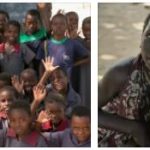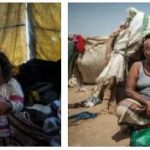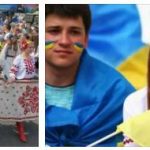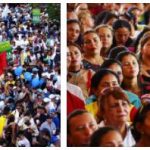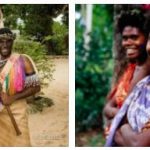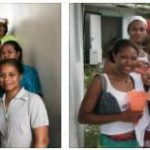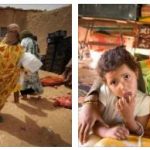General Information about the Seychelles
The official name is the Republic of Seychelles.
They are located in the Seychelles and Amirante Islands, on the islands of Aldabra, Farquhar and others in the western part of the Indian Ocean. The area is 455.3 thousand km2, the population is 81 thousand people. (2002). The official languages are Creole, English and French. The capital is Victoria (26.3 thousand people, 2001). Public holiday – Constitution Day June 18 (since 1993). The monetary unit is the Seychellois rupee.
Member of the UN (since 1976), IMF (since 1978), AfDB, FAO, AU, SADC, UNCTAD, UNESCO, WTO (observer).
Geography of Seychelles
The geographical center of the archipelago is 4°35’S and 55°40’E, northeast of the island of Madagascar. The largest islands – Mahe, Praslin, La Digue – are crystalline, small islands are partially coral. The Seychelles are located on an underwater elevation (up to 915 m on the island of Mahe). Guano (layers of bird droppings) is mined approx. 6 thousand tons per year. The climate is subequatorial, maritime. Average monthly temperatures are +26-28°C. Precipitation up to 4000 mm per year. Numerous small rivers flow from the tops of the granite islands.
In the interior, evergreen tropical forests with a large number of endemics have been preserved. Amphibians, giant elephant turtles, and birds are endemic (Cousin Island is the only bird sanctuary in the Indian Ocean). Plantations of coconut palms, tobacco, spices, essential plants.
Seychelles population
Population growth 0.47% per year (2002). Birth rate 17.27%, mortality 6.57%, infant mortality 16.86 people. per 1000 newborns (2002). According to Countryaah, average life expectancy is 70.97 years (2002).
Sex and age structure of the population: 0-14 years old – 27.8% (ratio of men and women 1.02); 15-64 years – 66% (0.95); 65 years and older – 6.2% (0.5) (2002). Rural population 69%, urban 31% (2000). Competently 85% of the adult population (2000).
Main ethnic groups: Africans (Creoles) – 93%, Europeans, Indians and Chinese. Languages are Creole, English and French.
Christians – 95.9%, others – 4.1%.
History of the Seychelles
The Seychelles were discovered by Portuguese navigators at the beginning. 16th century All R. 18th century colonized by the French, in con. 18th century captured by the British, in 1810 proclaimed a British possession, in 1814 merged with the British possession of Mauritius. In the 1880s-90s. local authorities (executive and legislative councils) have been created. Since 1903 a colony of Great Britain. The national liberation movement unfolded after World War II, especially in the 1960s and 1970s: strikes in 1966, 1972, and others. Since June 1976, the Seychelles has been an independent republic. In 1993, a new constitution was adopted that limited the president’s tenure to three five-year terms. The last presidential elections took place in 2001.
State structure and political system of the Seychelles
Seychelles is a presidential republic. The Constitution of 1993 is in force. Administratively, the Seychelles are divided into 23 districts (2003): Anse au Pin, Anse Boileau, Anse Etoile, Anse Louis, Anse Royal, Be Lazar, Beau Sainte-Anne, Beau Vallon, Bel Air, Bel Ombre, Cascade, Glacis, Grand Anse (on the island of Mahe), Grand Anse (on the island of Praslin), La Digue, La Rivière Anglaise, Mont Buxton, Mont Fleury, Plaisance, Pointe la Rue, Port Glo, Saint Louis, Takamaka. Largest cities (2003, thousand people): Victoria, Anse Royal (3.7). The highest body of legislative power is the unicameral National Assembly (34 seats). Executive power is exercised by the president of the republic and the government. The head of state and government is President France Albert René. The head of the supreme legislative body is Francis MacGregor.
The President and 25 deputies of the National Assembly are elected by direct universal suffrage for a period of 5 years, 9 – on a proportional basis in accordance with the share of votes (minimum 10%) received by the party in parliamentary elections. The President has the right to appoint the Vice President. The Council of Ministers is appointed by the President and acts under him as an advisory body.
President René, founder of the PF, came to power in 1977 in a coup and has been in charge of the country for over 26 years. Under him, the Seychelles became one of the most developed countries in Africa.
The local self-government bodies that head the districts are appointed by the president.
Main parties: Progressive Front of the People of the Seychelles (PFNS, has an absolute majority of seats in Parliament); Democratic Party (DP); Seychelles National Party (SNP), unites 3 opposition parties; Social Democratic Alliance (SDA).
Leading business organizations: Seychelles Chamber of Commerce and Industry, Federation of Seychelles Employers’ Associations.
Public organizations: Federation of Seychelles Workers’ Trade Unions (founded in 1978, 25,200 members).
The main goals of domestic policy are: democratization of public life – free media, an independent judiciary that protects fundamental human rights.
In foreign policy, the country is a member of the Non-Aligned Movement. Efforts are being made to turn the Indian Ocean into a zone of peace. Member of the Indian Ocean Commission (other members: Madagascar, Mauritius, Comoros and Reunion). Following a peaceful course, the government prohibited all warships from entering the port of Victoria.
In 2000, there were 450 people in the army. (including 200 Coast Guard personnel). National Guard (semi-military formation) – 250 people.
The Seychelles have diplomatic relations with the Russian Federation (established with the USSR in 1976).
Economy of Seychelles
Seychelles has one of the highest per capita income levels in Africa. GDP $605 million, GDP per capita $7,600 (2001). Economically active population 30.9 thousand people. (1996). Inflation 6.1% (2001).
Sectoral structure of the economy in terms of contribution to GDP (1999,%): agriculture 3, industry 26, service sector 71. The economically active population is employed (1999,%): in agriculture 7.5, in industry 20, in the service sector 72, 5.
Electricity generation 160 million kWh (2000). Searches for oil are underway. There are factories for the production (1999): canned tuna (33.3 thousand tons), beer (6.8 million liters) and soft drinks (10.6 million liters), cigarettes (60 million pieces), detergents, boats, furniture, dairy products, paints. TV receivers are being assembled.
There are very few fertile soils. Main agricultural crops (2000 thousand tons): coconuts (3.2), bananas (2), vegetables (1.8), dry cinnamon (400 tons), tea (236 tons).
In livestock breeding (2000, thousand heads): pigs 18.3, goats 5.2, cattle 1.4, poultry 550.
Commercial catch (1997, thousand tons): fish 6, shrimps 4.
There are no railroads. The length of the road network is 280 km, including 176 km of paved roads (1997).
There are 14 airports. Point Lame International Airport (10 km from Victoria). Air Seychelles, founded in 1979, serves scheduled and charter domestic and international flights.
The only port of Victoria. The merchant fleet has 2 large vessels with a total displacement of 7.1 thousand tons (2002).
The islands have a highly efficient telephone network. Communication facilities (1997): radios – 42 thousand, televisions – 11 thousand, telephones – 19.7 thousand lines, cell phones – 16.3 thousand subscribers (1999), Internet providers – 1 (2000), users Internet – 9 thousand people. (2002).
Tourism is the leading branch of the economy. In 1999, 124.8 thousand tourists visited the Seychelles. Tourism revenue $111.5 million.
Modern economic and social policy is focused on the private sector, which has a leading role in the economy. Created new legislation to encourage national and foreign investment. In the long term, there is a reorientation from the tourism sector to the business services sector. By 2020, it is planned to completely eliminate illiteracy.
The exchange rate of the national currency of the rupee is pegged to the weighted average “basket of currencies” of the countries – the main trading partners (euro, yen, pound, Singapore dollar, South African rand, US dollar). Foreign exchange reserves $21.59 million (1999). Demand deposits in commercial banks 574.2 million seiches. rupees, cash in free circulation 206.4 million seishas. rupees.
Government budget: revenues $249 million, expenditures $262 million (1998). Public debt $240 million (1999).
Average monthly salary $500, average pension $240 (1997). Unemployment 12% (1997).
In 2001, the volume of exports amounted to 182.6 billion, and imports 360.2 million US dollars. Exports (1999): UK (48.1%), Italy (23.1%), France (14.8%), Netherlands (2.7%). Imports (1999): Italy (13.3%), South Africa (10.7%), France (9.9%), UK (8.0%), Singapore (7.7%). The main export commodities are tuna meat, coconuts, copra, cinnamon, re-export of petroleum products; imported – food, industrial products, machinery and equipment, vehicles.
Science and culture of the Seychelles
Compulsory free education from 6 to 15 years (primary – 6 years, secondary – 5 years, of which the first 3 years are compulsory). In Victoria there are (1998): Polytechnic (1380 students) and Pedagogical Institute (302 students). Some students study abroad, mainly in the UK.
The Seychelles is influenced by French culture. Music and dance are an integral part of traditional culture. The most common musical instrument is the tom-tom. In 1977, the Center for Applied Arts and Crafts was opened, where they learn how to make souvenirs that are in great demand among tourists (polished sea coconut of the original form, etc.).

